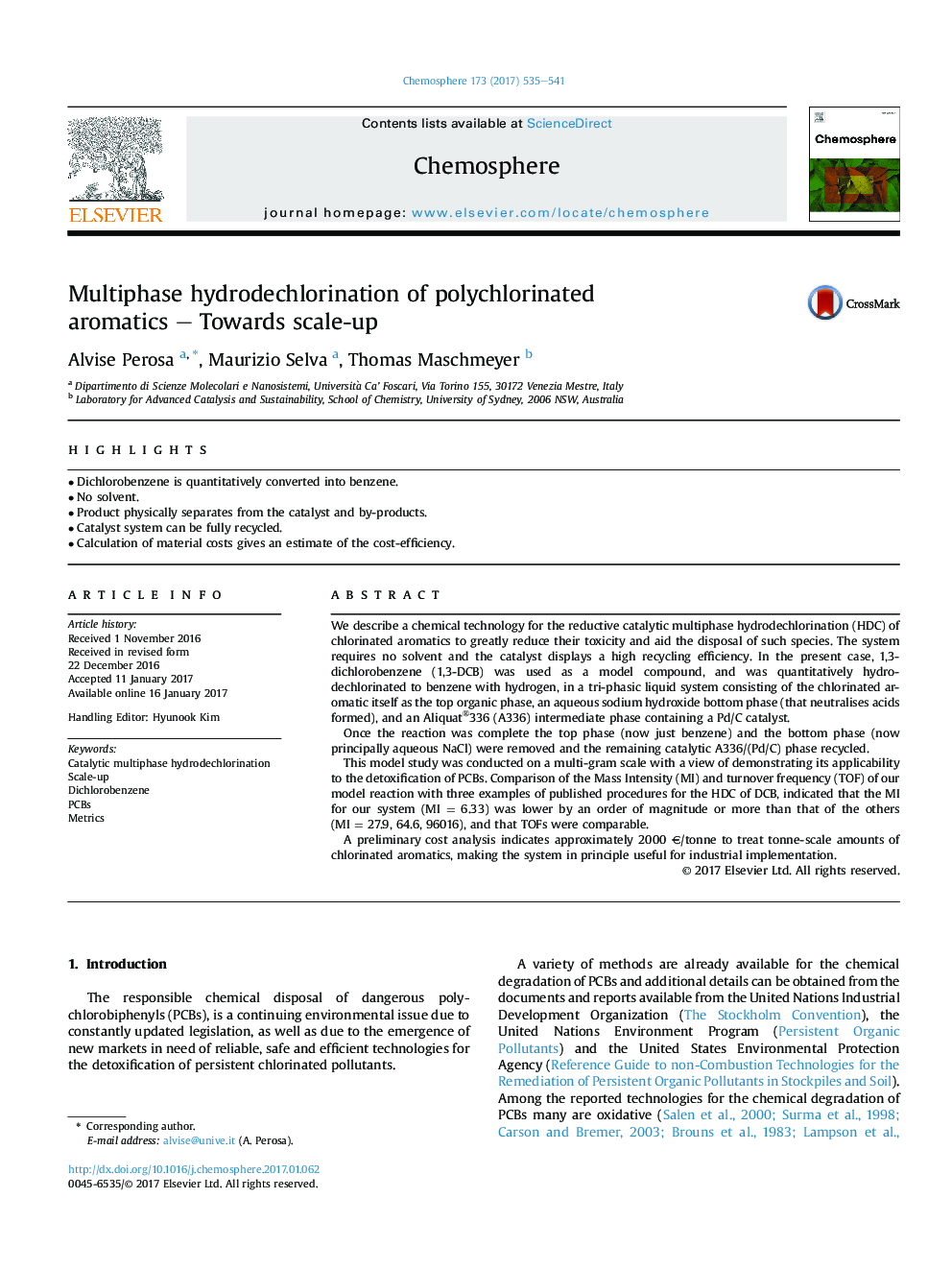| Article ID | Journal | Published Year | Pages | File Type |
|---|---|---|---|---|
| 5747435 | Chemosphere | 2017 | 7 Pages |
â¢Dichlorobenzene is quantitatively converted into benzene.â¢No solvent.â¢Product physically separates from the catalyst and by-products.â¢Catalyst system can be fully recycled.â¢Calculation of material costs gives an estimate of the cost-efficiency.
We describe a chemical technology for the reductive catalytic multiphase hydrodechlorination (HDC) of chlorinated aromatics to greatly reduce their toxicity and aid the disposal of such species. The system requires no solvent and the catalyst displays a high recycling efficiency. In the present case, 1,3-dichlorobenzene (1,3-DCB) was used as a model compound, and was quantitatively hydrodechlorinated to benzene with hydrogen, in a tri-phasic liquid system consisting of the chlorinated aromatic itself as the top organic phase, an aqueous sodium hydroxide bottom phase (that neutralises acids formed), and an Aliquat®336 (A336) intermediate phase containing a Pd/C catalyst.Once the reaction was complete the top phase (now just benzene) and the bottom phase (now principally aqueous NaCl) were removed and the remaining catalytic A336/(Pd/C) phase recycled.This model study was conducted on a multi-gram scale with a view of demonstrating its applicability to the detoxification of PCBs. Comparison of the Mass Intensity (MI) and turnover frequency (TOF) of our model reaction with three examples of published procedures for the HDC of DCB, indicated that the MI for our system (MI = 6.33) was lower by an order of magnitude or more than that of the others (MI = 27.9, 64.6, 96016), and that TOFs were comparable.A preliminary cost analysis indicates approximately 2000 â¬/tonne to treat tonne-scale amounts of chlorinated aromatics, making the system in principle useful for industrial implementation.
